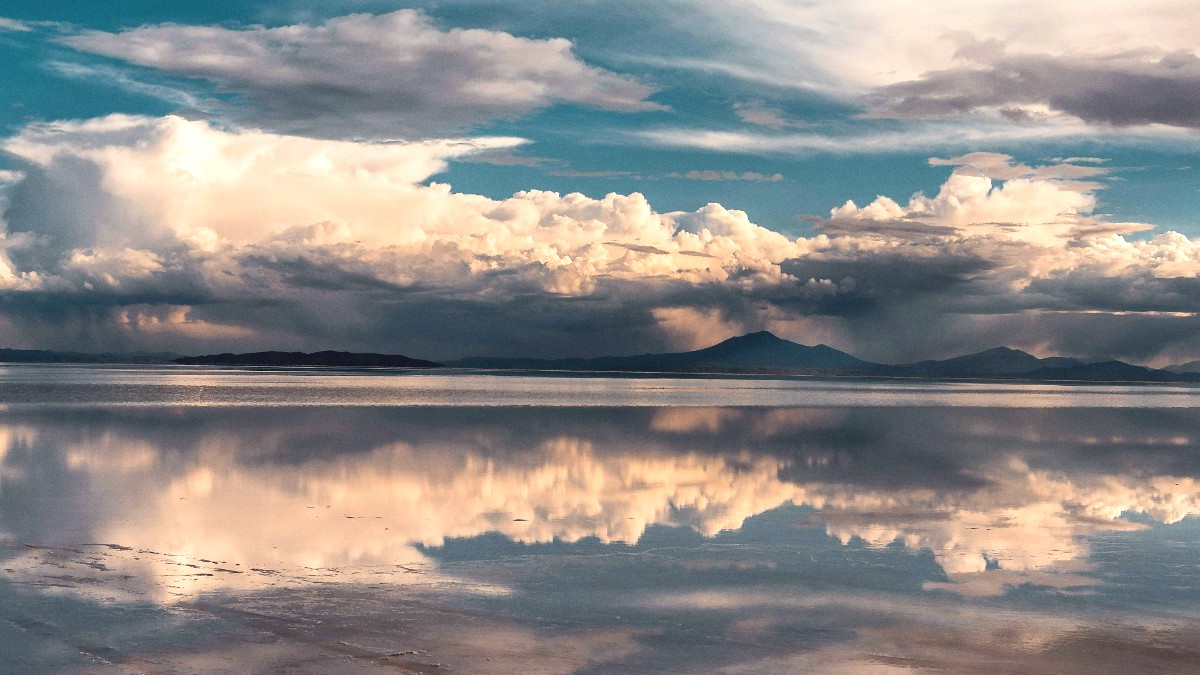
Bolivia
The immense salt flat is the main draw. During the dry season (May to November), it stretches as a dazzling white expanse, perfect for perspective photography. The clarity and flatness of the surface create optical illusions, making for fun and unique photos.
In the wet season (December to April), a thin layer of water transforms the salt flat into a colossal mirror. This reflection of the sky creates breathtaking, otherworldly scenes. The "mirror effect" is a favorite for photographers, with sunsets and sunrises offering specifically dramatic views.
A "fish island" in the middle of the salt flat, known for its giant cacti and fossilized coral formations. A short hike to the top provides panoramic views of the Salar.
A collection of abandoned 19th-century steam locomotives outside Uyuni town. These rusting relics offer a glimpse into Bolivia's mining history and an unique photo backdrop.
Some accommodations on the edge of the Salar or for the first night of tours are built almost entirely from salt blocks. These offer an unique, rustic lodging experience.
Found in high-altitude lagoons.
Wild relatives of llamas and alpacas.
Often seen with local herders.
Elusive inhabitants of the region.
Multi-day tours typically include basic accommodation and meals. Days are full of sightseeing, and evenings provide opportunities for stargazing. Be prepared for rustic conditions, especially during overnight stays in refugios.
Observe local communities practicing traditional salt harvesting. It demonstrates their connection to the land.
See vast quinoa fields, a staple crop in the Andean diet, during specific seasons. Learn about its cultivation.
Interact with local Aymara and Quechua communities; gain insight into their high-altitude lifestyle and traditions.
The high altitude, dry climate, and minimal light pollution over the Salar de Uyuni create some of the clearest night skies on Earth. This place is a paradise for astrophotography and simply observing the cosmos.
The Salar holds vast lithium reserves, critical for global battery production. This brings economic opportunity but also environmental considerations.
Sustainable practices are important.
Lithium extraction uses significant amounts of water in an already arid region. Impacts on local communities and ecosystems are a concern.
Water conservation is critical.
Increased tourism places pressure on fragile ecosystems. Proper waste management and adherence to guidelines are necessary.
Responsible travel habits apply.
A journey to Salar de Uyuni is an adventure into one of the world's most unique and remote landscapes. It is a destination that stays with you, offering incredible natural beauty, cultural insights, and a challenging but rewarding travel experience. Preparation is important for comfort and safety.
The journey involves rough terrain and basic amenities, appealing to those seeking true adventure and a departure from standard tourism.
Most tours are small group experiences, offering a chance to meet fellow travelers and share the unique journey.
The trip highlights the delicate balance of high-altitude ecosystems and the impact of human activities like tourism and resource extraction.
Salar de Uyuni is more than just a destination; it is an adventure that challenges and inspires. With proper preparation and an open mind, you embark on a memorable journey to one of Earth's natural wonders.
The surreal landscapes and unique experiences create memories that stay long after you depart.